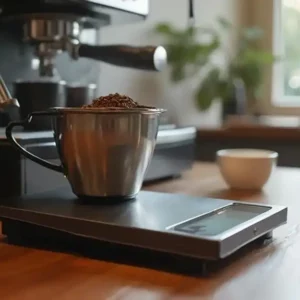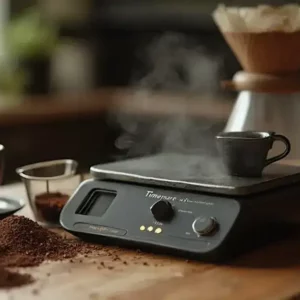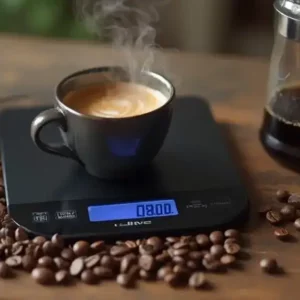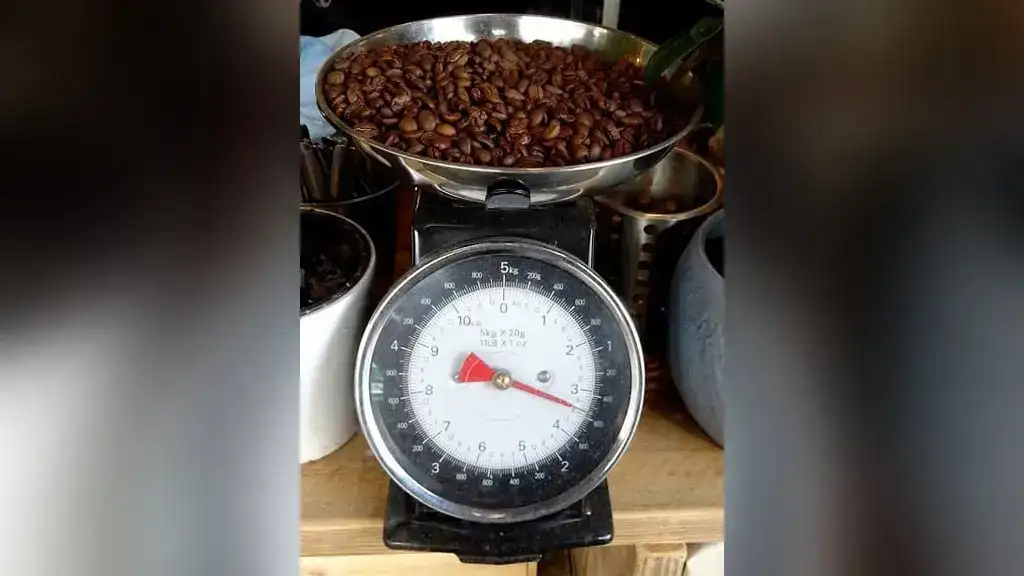Are you tired of guessing the perfect amount of coffee grounds for your brew? Look no further, because coffee scale weight units are here to revolutionize your coffee-making experience. With their precise measurements and easy-to-use features, these scales will take your brewing game to the next level.
Say goodbye to inconsistency and hello to innovation. Whether you prefer metric or imperial units, this article will guide you through the world of coffee scale weight units, ensuring accurate measurements every time.
Get ready to brew like never before!
Metric Units in Coffee Scale
[youtube]https://youtu.be/19LKbklP8TQ[/youtube]
Grams (g) are considered the gold standard in coffee scale weight units. They’re widely favored for their accuracy and ability to ensure consistent coffee quality.
Wondering how different coffee scales stack up against each other? Dive into our comparison between coffee and kitchen scales to see which one reigns supreme. With the right scale, you’ll never have to second-guess your measurements again.
Additionally, milligrams (mg) play a crucial role in scenarios that require extremely precise measurements, catering to the need for precision in coffee brewing processes.
Grams (g): The Gold Standard
When brewing coffee, you should rely on grams as the gold standard for coffee scale weight units to ensure consistent and high-quality results. Grams offer precise and accurate measurements, making them essential for achieving coffee scale precision.
Here are three reasons why grams are widely favored and play a crucial role in ensuring consistent coffee quality:
- Consistent Measurements: Coffee scales that use grams provide consistent measurements, allowing you to replicate your desired coffee brewing process accurately.
- Weight Accuracy: Grams offer a level of accuracy that other weight units may not provide. This accuracy ensures that you can measure the exact amount of coffee beans or water needed for your brew.
- Importance of Grams: Using grams as the standard weight unit in coffee brewing ensures that baristas and coffee enthusiasts worldwide can communicate and share recipes without confusion.
Milligrams (mg): Delving into Precision
To achieve extremely precise measurements on your coffee scale, consider using milligrams (mg) as they cater to scenarios requiring utmost accuracy. In certain precision scenarios, such as measuring the exact amount of coffee for espresso or conducting scientific experiments, every milligram counts.
Milligrams are a unit of measurement that allows for microgram measurements, which is crucial for achieving weight precision in small-scale measurements. Coffee enthusiasts and professionals who strive for perfection in their brews rely on milligrams to ensure consistency and quality.
For those who are serious about their brew, maintaining your coffee scale is paramount. Discover some handy coffee scale maintenance hacks to keep your device in top shape. After all, precision is the key to a perfect cup.
Coffee Scales Imperial Units
When it comes to coffee scale weight units, the usage of ounces is worth exploring. Ounces strike a balance between volume and weight, making it a popular choice in regions that still prefer imperial units.
Additionally, in the context of bulk coffee buyers and sellers, pounds play a crucial role due to their convenience and practicality in commercial settings.
Ounces (oz): Balancing Volume and Weight
Are you familiar with the usage of coffee scale ounces and their conversion to other units in regions with imperial preferences?
Coffee scale ounces play a crucial role in coffee brewing, as they offer a balance between volume and weight. Converting ounces to grams provides a more precise measurement, ensuring consistency in your coffee-making process.
The ounces vs milliliters debate in coffee measurement is ongoing, as different regions prefer different units. However, ounces remain a popular choice for many coffee enthusiasts.
It’s important to address common misconceptions about ounces in coffee scales, such as assuming they only measure volume.
Lastly, exploring the history of ounces as a coffee weight unit can provide valuable insights into its continued usage and relevance in the coffee industry.
If you’re on the fence about whether to trust your instincts or rely on a scale, our article on eyeballing vs. using coffee scales might just sway your decision. It’s a battle of intuition versus precision!
Pounds (lb): For Bulk Coffee Buyers and Sellers
You should consider using pounds as the primary unit of measurement in commercial and large-scale coffee contexts, as it offers convenience and accuracy. In the coffee trade, the importance of pounds can’t be overstated.
While grams and ounces are commonly used for smaller quantities, pounds are the preferred unit when dealing with bulk coffee.
One pound is equal to 16 ounces and approximately 453 grams. Pound conversion methods are readily available and easy to use, allowing for seamless transitions between different units of measurement.
Traveling soon? Don’t let your coffee game suffer. Check out our guide on travel coffee scales for every destination. Whether you’re off to a tropical beach or a snowy mountain, we’ve got you covered.
Transitioning Between Coffee Scales Weight Units
To ensure accurate measurements and consistent results in your coffee brewing, it’s crucial to understand the importance of converting between different Coffee Scale Weight Units.
Whether you’re translating global coffee recipes into your preferred local units or utilizing coffee scales with multi-unit functionality, accurate conversions are key.
Converting Units for Global Coffee Recipes
Do you know how to accurately convert between different Coffee Scale Weight Units for global coffee recipes?
Converting units for global coffee recipes can be a challenge, especially when it comes to translating recipes into locally preferred Coffee Scale Weight Units. However, with the right tools and tips, you can ensure that your measurements are accurate and consistent.
Here are some key points to keep in mind:
- Understand the different Coffee Scale Weight Units used globally, such as grams, ounces, or kilograms.
- Use conversion charts or online tools to easily convert between different units.
- Take into account the precision required for your recipe and adjust your measurements accordingly.
Coffee Scales with Multi-Unit Functionality
But, if you’re looking for a coffee scale that allows you to switch between metric and imperial units, there are modern options available. These coffee scales with multi-unit functionality provide convenience and flexibility for users who prefer different measurement systems.
One of the key advantages of metric units is their precision. Metric measurements, such as grams, allow for more accurate and consistent measurements compared to imperial units like ounces.
This precision is especially important in the world of coffee, where small variations in the amount of grounds can greatly impact the taste and quality of the brew.
Additionally, coffee scales with multi-unit functionality have commercial applications, as they allow coffee shops and roasters to easily convert recipes from different parts of the world, ensuring consistent results and customer satisfaction.
Features can make or break a coffee scale. Before making a purchase, ensure you’ve gone through our comprehensive coffee scale features checklist. It’s the roadmap to finding your ideal scale.
Tare Weight: Zeroing Coffee Scale
To ensure accurate coffee measurement, it’s essential to understand the concept of tare weight on a coffee scale.
The tare function allows you to zero out the weight of the container, so you can focus solely on the weight of the coffee.
For those who often find themselves brewing in wet conditions, consider investing in waterproof coffee scales. With these, a little splash won’t dampen your brewing spirits.
The Essentials of the Tare Function
You can easily understand the essentials of the tare function on a coffee scale and how it greatly contributes to achieving precise measurements, regardless of the container you use.
The tare function benefits coffee scale weight units in several ways:
- It allows you to deduct the weight of the container from the total weight, giving you an accurate measurement of just the coffee.
- The tare function takes into account the impact of the container on measurements, ensuring that the weight of the container doesn’t affect the accuracy of the coffee measurement.
- To ensure the accuracy of the tare function, it’s important to place the container on the scale before pressing the tare button. This ensures that the scale registers the weight of the container accurately.
- If you encounter any issues with the tare function, such as the scale not resetting to zero after pressing the tare button, try removing and re-placing the container on the scale or turning the scale off and on again.
- While the tare function is the most common method for achieving accurate measurements, there are alternative methods available, such as using a separate container for weighing the coffee and subtracting its weight manually. However, the tare function remains the most convenient and efficient option for precise coffee measurements.
Coffee Scale Calibration and Ensuring Unit Accuracy
To ensure accurate measurements with your coffee scale, regular calibration is essential.
Factors such as temperature changes, surface level, and wear and tear can all affect the accuracy of your scale.
Still unsure about which type of coffee scale to go for? Our breakdown of different coffee scales types will help you navigate the myriad of options out there. Knowledge is power, after all.
The Need for Regular Coffee Scale Calibration
Regular calibration is key to maintaining the accuracy of your coffee scale. Proper calibration ensures that your measurements are precise and reliable, allowing you to consistently brew the perfect cup of coffee.
Here are some factors that can affect the accuracy of your coffee scale and highlight the importance of routine calibration:
- Environmental conditions: Changes in temperature and humidity can affect the performance of your scale, leading to inaccurate measurements. Regular calibration helps to account for these variations and ensure accurate readings.
- Wear and tear: Over time, the components of your coffee scale may experience wear and tear, impacting its accuracy. Routine calibration helps identify any potential issues and allows for necessary adjustments or repairs.
- Usage frequency: The more frequently you use your coffee scale, the more important it’s to calibrate it regularly. Daily use can lead to slight changes in accuracy, and calibration helps maintain consistent measurements.
Recognizing and Rectifying Measurement Inaccuracies
Recognizing and rectifying measurement inaccuracies can significantly improve the accuracy of your coffee scale weight units. To ensure consistent accuracy, it is important to identify and address common measurement errors.
In the modern age, precision is key. Explore the world of digital coffee scales and understand how they bring modern precision to every brew. It’s a blend of technology and tradition.
By rectifying these measurement inaccuracies, you can achieve precise and reliable results in your coffee brewing process.
Here are some common errors that you may encounter with coffee scale weight units and solutions to rectify them:
| Measurement Errors | Solutions |
|---|---|
| Inconsistent readings | Calibrate your scale regularly to ensure accurate measurements. |
| Drifting measurements | Check that your scale is on a stable surface and not affected by external factors. |
| Zero errors | Reset your scale to zero before each measurement to eliminate any residual weight. |
| Overloading | Avoid exceeding the maximum weight capacity of your scale to prevent inaccurate readings. |
| Uneven weight distribution | Ensure that the coffee grounds are evenly spread on the scale to obtain accurate measurements. |
Coffee Scale Historical and Regional Weight Preferences
As you delve into the history of Coffee Scale Weight Units, you’ll discover the fascinating evolution of these measurement systems in coffee-making.
From ancient units like the bean to more modern equivalents like grams and ounces, coffee weight units have undergone significant changes over the ages.
Additionally, exploring regional preferences for specific units will shed light on the cultural and historical factors that have influenced coffee measurement practices in different parts of the world.
Coffee Weight Units Through the Ages
If you want to understand the historical Coffee Scale Weight Units used in coffee measurement and their modern equivalents, you can trace their evolution in coffee-making and regional preferences.
The evolution of coffee measurement has seen a shift from traditional measuring methods to the use of digital scales. In the past, coffee was often measured using simple tools like scoops or cups, with each region having its own preferred weight units.
However, with the rise of digital scales, coffee measurement has become more precise and standardized. These scales allow for accurate and consistent measurements, ensuring that coffee is brewed to perfection every time.
Additionally, cultural influences have played a role in shaping coffee weight units, with different regions favoring different weights based on their brewing traditions.
The benefits of using a coffee scale extend beyond just accurate measurements. Discover the myriad of coffee scale benefits that can transform your daily brewing ritual. Every detail counts in the pursuit of the perfect cup.
Regional Unit Preferences and Their Origins
You can explore why certain global regions have a preference for specific Coffee Scale Weight Units and how these preferences have developed over time.
Cultural influences, economic factors, environmental considerations, technological advancements, and standardization efforts all play a role in shaping these regional unit preferences.
| Cultural Influences | In some regions, the preference for specific Coffee Scale Weight Units can be attributed to cultural traditions and customs. For example, in certain countries, there may be a historical association between a particular weight unit and traditional coffee-making practices. |
| Economic Factors | Economic factors also play a role in determining regional preferences for Coffee Scale Weight Units. In regions where coffee production is a significant industry, the weight unit used may align with the local market and trading practices. |
| Environmental Considerations | Environmental considerations can influence the choice of Coffee Scale Weight Units. For instance, regions that prioritize sustainability and environmental conservation may prefer weight units that minimize waste and promote efficient use of resources. |
| Technological Advancements | Technological advancements in coffee-making equipment can also influence the preference for specific Coffee Scale Weight Units. For example, the development of high-precision scales may lead to the adoption of more precise weight units in certain regions. |
| Standardization Efforts | Standardization efforts within the coffee industry can also shape regional preferences for Coffee Scale Weight Units. Industry organizations and regulatory bodies may establish guidelines and standards for the use of specific weight units, leading to their widespread adoption in certain regions. |
For those who love multitasking, consider coffee scales equipped with timers. Our article on coffee scales with timers showcases why they’re a must-have for the modern brewer. Time and weight, all in one!
With so many options out there, how do you choose the best? Our curated list of top coffee scales will guide you to the crème de la crème of the coffee scale world. Quality matters!
Understanding the origins of these regional preferences provides valuable insights into the diverse factors that influence the coffee-making process and the development of Coffee Scale Weight Units.
Conclusion
In conclusion, the coffee scale weight units aren’t just mere measurements, but the unsung heroes of the coffee brewing world. With their metric and imperial units, they bring precision and accuracy to every cup.
Transitioning between these weight units requires utmost care and accuracy, while tare weight ensures that only the coffee itself is weighed.
Calibration is the key to maintaining measurement accuracy, and historical and regional weight preferences add a touch of flavor to the art of coffee-making.
Coffee scales truly deserve a standing ovation.


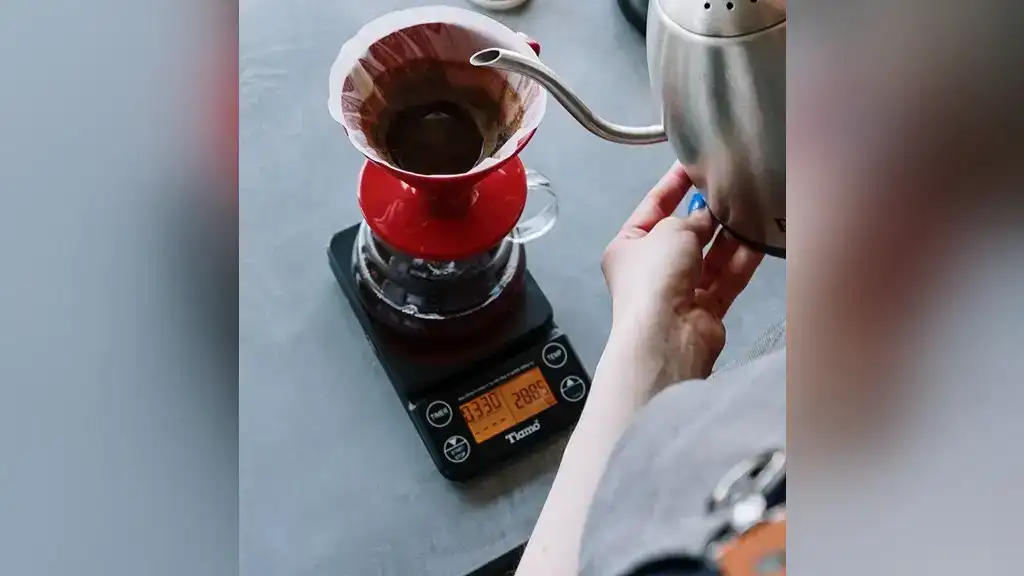


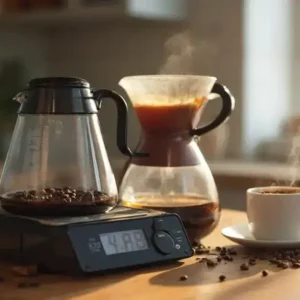
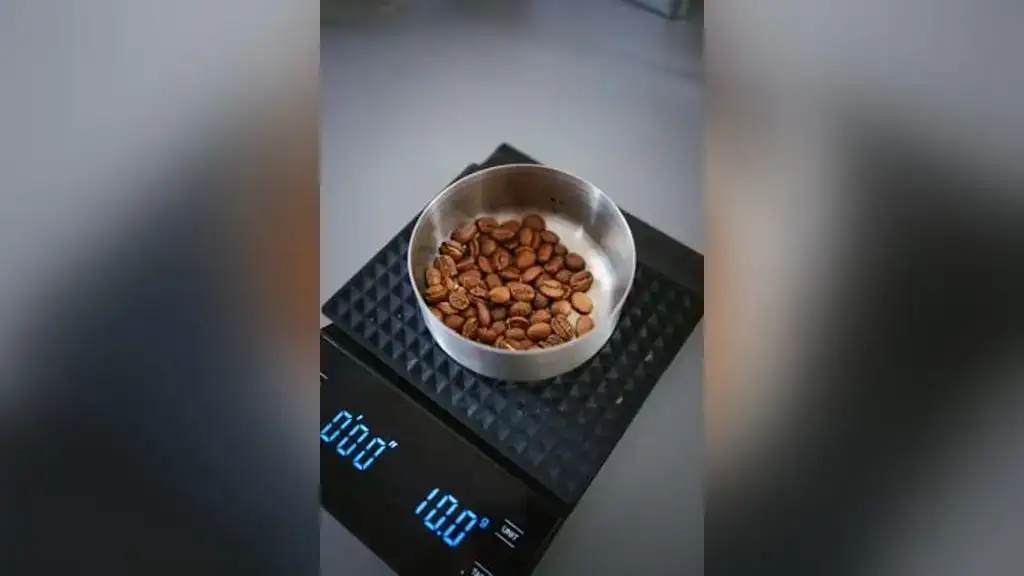


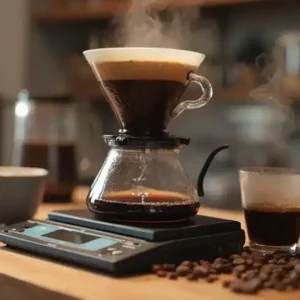
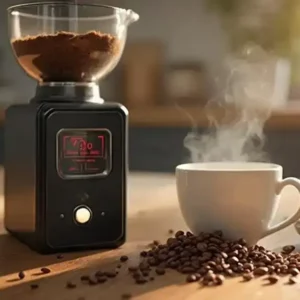


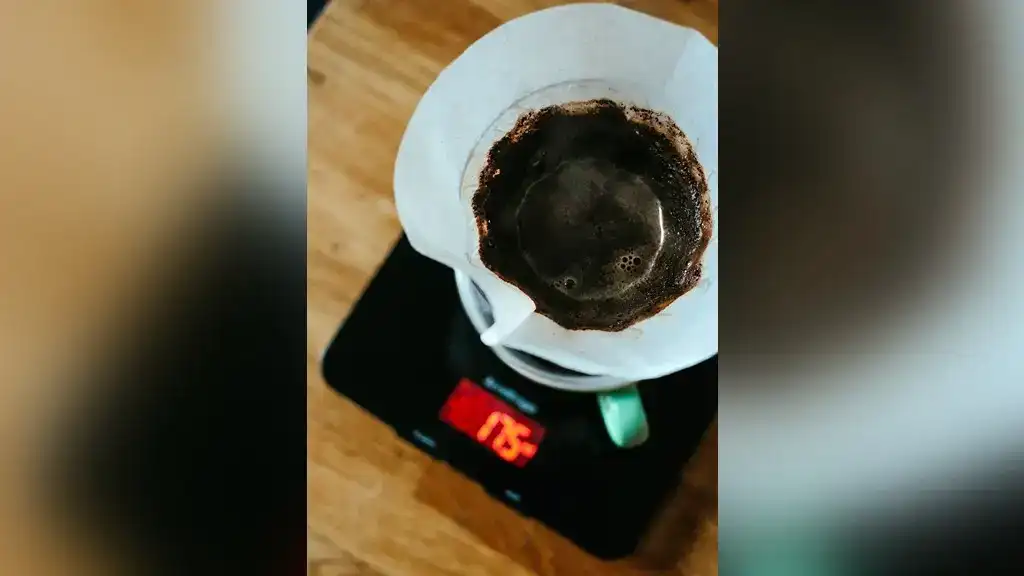


![Best Coffee Scales ([year]) You Shouldn't Miss! Best-Coffee-Scales-You-Shouldnt-Miss-1](https://coffeescan.com/wp-content/uploads/Best-Coffee-Scales-You-Shouldnt-Miss-1.webp)
